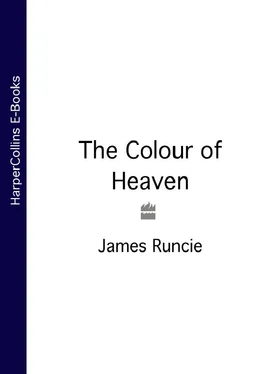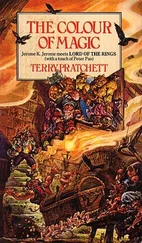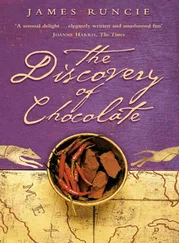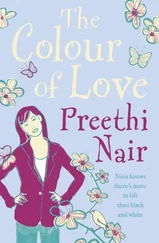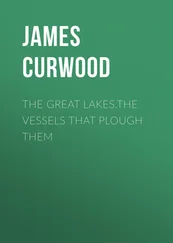‘Lippo, do the hands – Mino, finish this halo – Ugolino, decorate the cloak of the Virgin.’
‘How?’
‘Make it up!’
Paolo began by preparing charcoal for drawing: taking strands of willow and cutting them into matchsticks, smoothing and sharpening them like spindles, tying them in bunches, and then placing them in an earthenware pot which he took each night to the baker’s, letting the strands roast until morning.
After four months he learned how to work with colour, grinding pigment from stone on slabs of porphyry or serpentine. In order to make azure, he would boil up hot alkaline mixtures of honey and lye in a series of bowls and then add the pigment, keeping a close eye as the colour gradually settled. Once he had drawn off the liquid, he would be left with paint ready to bind with egg yolk and apply to either panel or fresco.
Just as he had learned to define each shade of stone and glass, so Paolo now began to see how paint could lighten or darken, enrich, or become dull in a moment.
‘Our task is nothing less than to show the glory of God’s creation. Painting is an act of faith, Paolo. We tell stories, inspire devotion. This is the land of miracles’ – Simone smiled – ‘even if they sometimes become repetitive.’
‘What do you mean?’
‘Saints can be tedious, do you not think? There are only so many ways in which a painter can depict devotion. Hell is so much more diverting.’ As they blended pigment with egg yolks, Simone began to tell Paolo of his ambition to paint a Last Judgment: the dead emerging from the cracks and fissures of the earth, skeletal, ghostly, waiting either to be clothed in flesh or tormented in hell, haunted by a pale blue light. As he warmed to his theme the story became filled with dreadful detail. There would be blazing rivers and bottomless pits of volcanic despair containing the stained souls of the damned, blackened by sin and lit with flames. Usurers would have to swallow hot coins, and sodomites would be skewered like pigs. Slanderers with their mouths stretched and cut open would be seen with their teeth ground to a pulp and then re-grown only to be pulverised once more. The painting should be a vision of eternal misery, and above it all would be Satan with three bastard heads, bat’s wings, and Judas hanging, half-eaten, from his mouth.
‘So you can see that painting heaven is somewhat dull after all that,’ Simone concluded. ‘We need drama, not everlasting felicity. But this, of course, is our challenge. To make paradise exciting. A place beyond belief.’
Although he was a craftsman by day Simone was something of a dandy by night, wearing a different tunic for each evening’s passeggiata, but cut in the same style, and always in velvet: maroon on a Monday, azure on a Tuesday, vermilion on a Wednesday, burnt gold on a Thursday, lamp black on a Friday, crimson on a Saturday, and white on a Sunday. He rubbed his gums with mint, shaved, washed, and then scented himself with rosewater. Before he left the workshop he checked his appearance in a silvered mirror, and adjusted his curling hair accordingly. Life was a performance and he was its leading actor, presenting and perfuming himself before the world.
The true test of his showmanship came when the Commune of the City announced a competition to paint a fresco of the Coronation of the Virgin, a Maestà, for the Palazzo Pubblico. All the painters of the city were invited to compete: Segna di Buonaventura, Memmo di Filippuccio, Dietisalvi, and Simone. This was the first great secular commission, and it would rival Duccio’s golden Maestà in the cathedral, filling the east wall of the town hall.
Simone was determined to win and set to work immediately, laying out sketches of saints and angels, martyrs, apostles, and church fathers. He began to experiment with azurite and malachite, and brought in great swathes of fabric on which he could base his design for the Virgin’s mantle. Two assistants were asked to find new ways of gilding metal, so that the haloes of the saints would glow under candlelight as evening fell.
‘This is not only painting,’ he cried; ‘we must be the envy of all other trades: the goldsmiths, the weavers, and the dressmakers. We must paint what cannot be achieved on earth. That is our secret. We will depict the impossible.’
Paolo was asked to make charcoal for the preparatory drawings – the Virgin as Mother of God and Queen of Heaven, holding the Christ child, with the four patron saints of the city kneeling below: Ansanus, Savinus, Crescentius, and Victor.
‘Hold still,’ cried Simone. ‘You make a perfect saint. Keep working.’
As Paolo bound each twig of willow, Simone began to draw him. The pale face and blond hair curling under the ears. The thin nose. Long fingers. And Paolo’s strangely quiet blue eyes, endlessly puzzled, curious, surprised.
‘Which saint am I?’
‘Ansanus, the young Roman nobleman who first baptised the Sienese. Try to look more spiritual.’
‘I don’t feel very spiritual.’
‘Then look serene.’
‘Can’t I just be myself?’
‘No, no, that is not the point at all. Have you not listened to anything I have said? We must turn men into angels and make the heavens sing. Colour and joy. We are painting infinity,’ Simone cried.
Over three hundred councillors assembled to discuss the commission. Each painter had been asked to present his ideas in the council chamber where the Signori of the Nine, and the Consiglio della Campana gathered around their drawings. One painter suggested a celebratory painting of the recent acquisition of Talamone and a glorious gallery of all lands recently conquered. Another put forward his plan for an enormous panel of the Battle of Montaperti and the conquest of Montalcino; while a third proposed a representation of the day Buonaguida Lucari had laid the keys of the city on the altar of the cathedral and donated all that they had to the mercy of the Virgin Mary, their protectress against the iniquitous and evil Florentines.
Конец ознакомительного фрагмента.
Текст предоставлен ООО «ЛитРес».
Прочитайте эту книгу целиком, купив полную легальную версию на ЛитРес.
Безопасно оплатить книгу можно банковской картой Visa, MasterCard, Maestro, со счета мобильного телефона, с платежного терминала, в салоне МТС или Связной, через PayPal, WebMoney, Яндекс.Деньги, QIWI Кошелек, бонусными картами или другим удобным Вам способом.
